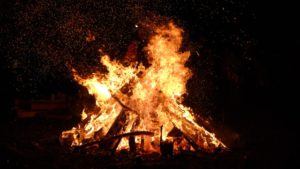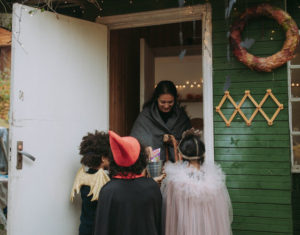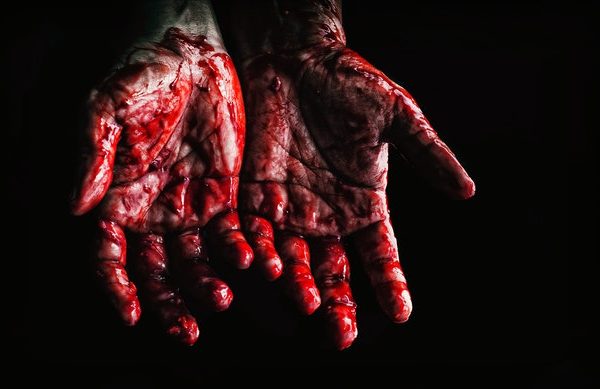What do you know about Halloween? In this episode, learn about one of America’s most beloved holidays!
- Listen to learn about the history of Halloween.
- First, try listening without reading the transcript. After that, listen again to check for any words you might’ve missed.
- You’ll also find a quiz at the end!
Transcript:
Hello and welcome to the English with Brian Podcast! In today’s episode we will be talking about one of America’s most iconic holidays: Halloween. Stay tuned.
When you think of Halloween, you might think of candlelit pumpkins, children going from door to door asking neighbors for candy, or famous horror movie villains like Freddy, Jason, or Pennywise. Or perhaps, the wild costumes, parties, and parades come to mind. Halloween is a uniquely American festivity that hasn’t quite caught on worldwide. Today we’ll be talking about the origins of the holiday and how it became an American tradition. Today, Halloween is celebrated on October 31st. With most parties and festivities beginning when the sun goes down. However, the roots of Halloween began over 2,000 years ago with the Celts, the people who lived in what is now Ireland and the UK. The Celts celebrated a holiday called Samhain(sow-in), that marked the end of the summer and the start of winter; the transition between light and dark, life and death. The Celts burned bonfires, made sacrifices, and offered prayers to the gods to gain their blessings for the coming winter. They believed that on this day, the boundaries between our physical world and the spiritual world were the thinnest. On this day faeries, monsters, and the spirits of the dead would return to Earth.
A bonfire is a large outdoor fire usually used in celebrations or festivities.
As Christianity took over Europe, Samhain was transformed into a new Christian holiday. In the Christian tradition, All Hallow’s Day was celebrated on November 1st. This was a day dedicated to honoring all of the saints. All Soul’s Day was celebrated on November 2nd, which was a day when Christians would honor the dead. These two holidays were eventually combined to create what we now call Halloween. These early Christians believed that by exchanging cakes door-to-door, offering prayers, and lighting lanterns made of turnips that would help guide the souls of the dead. To protect themselves from angry spirits and demons, they would wear costumes to hide their identities.
Three children trick-or-treating (going from door to door and asking neighbors for candy).
As colonists came to America, so did the Halloween tradition. At the start, Halloween was mostly recognized in the Anglican Southern states and from the Catholics in Maryland. Protestants, those who were against the Catholic Church, did not support the holiday. As the number of immigrants to America from Ireland and Scotland rose, so did the popularity of Halloween. By the end 20th century, with the rise of television and movies, Halloween had become an American tradition celebrated with trick-or-treating, parties, costumes, and sharing scary stories. Is Halloween celebrated in your country? How do you mark this change of seasons? How does your culture honor the dead?
In Mexico, on November 1st, the dead are honored on Día de Muertos (the Day of the Dead).
Alright. Now that you know the history of Halloween, let’s check your understanding. At the start of the episode, I said that Halloween hasn’t “caught on” worldwide. What does the phrasal verb, “caught on”, mean? — Well, if something is “catching on” it’s becoming popular. We could also say it is “spreading”. “Halloween hasn’t spread to other countries.” If something becomes popular online quickly, we could say that it is “going viral”.
Now, I have a few questions for you? What was the name of the Celtic holiday that inspired Halloween?
A. All Saint’s Day B. All Hallow’s Day or C. Sow-in
The correct answer is [ C, Sow-in ] is the Celtic holiday that inspired Halloween.Now for the next question. Before Americans made lanterns out of pumpkins, which vegetables did Europeans use to make their lanterns?
A. Tomatoes B. Turnips or C. Peppers
The correct answer is [ B, Turnips ] were used by early Europeans to celebrate Halloween.Ok, that’s it for today. I hope you enjoyed this episode. Happy Halloween!
















